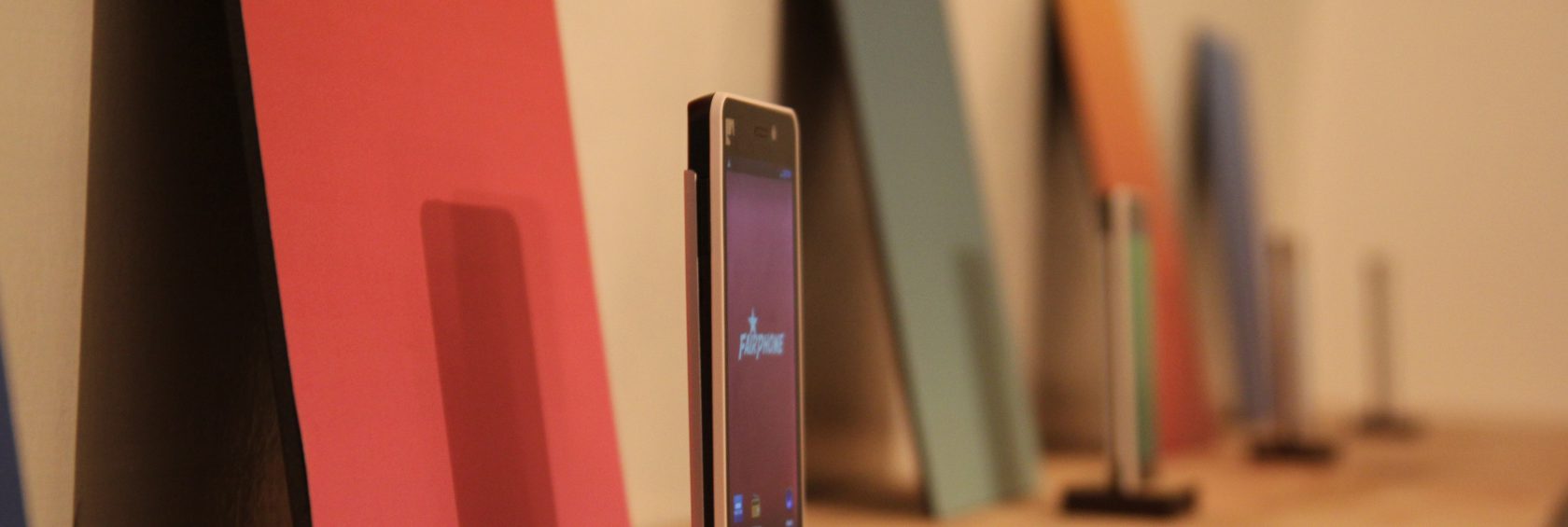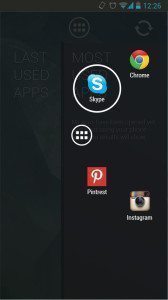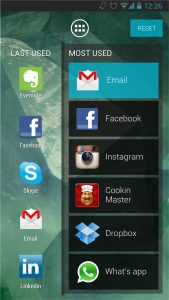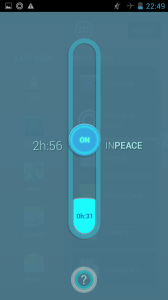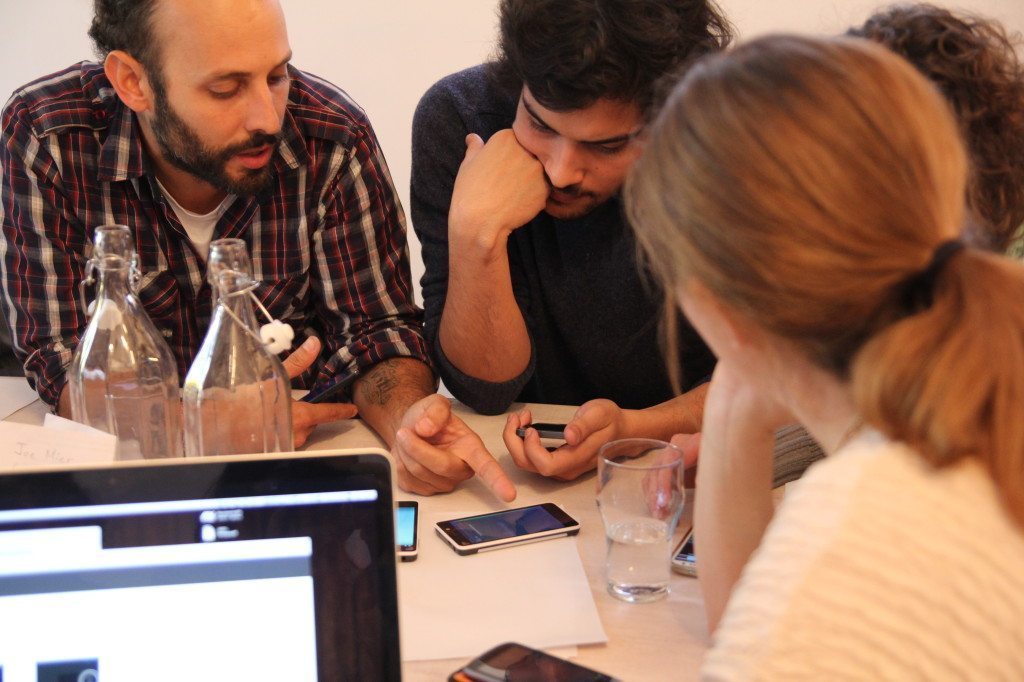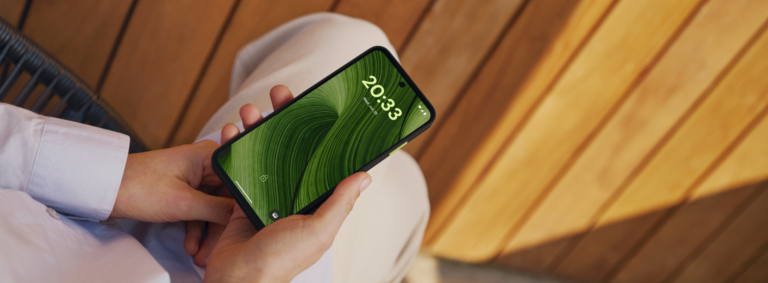Fairphone Operating System
This week, in the midst of our Fairphone Pop-Up Space in London, I’d like to share with you the story and design behind our Android-based Fairphone operating system (OS). It’s a topic that a lot of you are interested in as I’ve been hearing a lot of feedback via Facebook and Twitter, and I’ve taken some of these questions directly to our software developers, Kwamecorp, where I caught the man himself, Kwame, in their London Soho studio.
In a way, this was a dual opening – Fairphone with its prototypes, and Kwame with their Android-based OS – so I’m excited to give a first peek at our user experience with Kwamecorp’s OS. In this post, I’ll outline the main features of the Fairphone OS, the philosophy that built it, and the next steps for developer communities and updates.
First things first: the operating system. No, wait. A video! If you don’t want to read everything I write below about Fairphone OS. Just watch this:
OK, back to the operating system! What kind of software will come with the launch? Well, we start with an Android 4.2 Jelly Bean OS. But we wanted to get a bit more personal with the Fairphone OS, so we’ve teamed up with a social enterprise, Kwamecorp, to give our users an intuitive experience with their phones. When I sat down with Kwame, he explained to me the philosophy of their company and how they channeled this specifically into Fairphone OS.
Fairphone team members Tessa and Miquel first met Kwamecorp (Chris Dressel from design and Kim Hansen from engineering) last February at the Mobile World Congress. There was an instant melding of the minds, and we decided to team up for an end-of-year launch of their developed OS. Which means, their team had from March until August to come up with what we see today in the Pop-Up Space. Shout out to the Design Team (Chris, Joao Ferreira, Pedro Cardoso), Engineering (Kim, Tiago Costa, Jose Pascoal), and everyone else from Kwame who’s contributed to our collaboration.
Fairphone thinks of Kwame as a real leader in software development with an interesting research component that fits well with our founder organization, Waag Society. We really felt a good connection in terms of Kwame’s social dimension of their projects and their values of openness and creativity that we share. For these reasons, we thought Kwame would be a perfect partner for our device and future goals for our OS for a fantastic user experience. In their original proposal, Kwame offered that their version of Fairphone OS would “help convey the transparency needed to turn a product into a transparent story, the catalyst for real change.” Sounds like Fairphone, eh?
But that’s enough on philosophy. Let’s go into the details.
Kwame had a whole list of things they wanted to put into this OS. But like any good design process (and with this limited time constraint) – they had to reduce and prioritize to get 4 Fairphone-specific widgets that make this OS really special (well, I hope you find them special!). They were made especially for Fairphone OS to be distinctive to our story and carry our values to the user experience. Here’s a quick rundown of these widgets:
- Edge Swipe: quick use of your chosen favorite apps
- Last Used & Most Used: learning from you to easily categorize the apps you use the most
- Battery Usage Background: an optional layer on top of the wallpaper, which corresponds background color with battery usage status
- Peace of Mind: a conceptual tool that allows you to designate a certain amount of time to be disconnected from the digital world
Kwame explained their approach as taking the stock Android, expanding on its awesomeness, while also taking a new perspective: in an environment with constant notification systems, Kwamecorp is developing something that can balance the need to be connected with a more calming user experience.
First, it’s good to imagine the Android OS as a clean, blank slate where you can customize and create your space to your heart’s content. With this in mind, your favorite apps are organized under the Edge Swipe widget. Instead of stashing the apps at the bottom of the screen, for instance, your apps are hidden from view until you really need them. These “favorite” apps are set default to Phone, Text, Browser, and Camera; but you can customize it for your own needs.
Next, in the same vein of reducing clutter and the need for endless categorization – we’ve got the Most Used and Last Used widget. This is a widget panel meant to be an intuitive way to organize the apps you use the most – collected automatically by “learning” what you like the most and reorganizes them based on your natural use (just after playing around with it for a couple hours). It’s also a handy way to remind you what apps you use the most – making you more conscious of how you use your phone.
You also may notice that the background of the phone, the wallpaper, can act as a sort of Battery Mood Sensor for the battery status that uses color (Blue to Green to Yellow to Orange) to correspond to the phone’s battery usage. This is a layer on top of the wallpaper image, and can be toggled off or on.
The last feature I’d like to share with you is called the Peace of Mind widget. It’s an optional function that allows you to set a time (up to 6 hours) for which you want to disconnect from the outside world a bit – turning off all notifications and updates to shut out the rest of the world for a brief time. It’s sort of like a conceptual exercise for yourself, but it’s totally optional.
Development & Future Updates
Now after all this, you may want to know some specifics on development and future updates. Like I said before, Kwame was under a strict deadline to make sure we could stay on track to align with hardware dependencies – which means a “code freeze” for the time limit of work. Kwame’s emphasized the way he and his colleagues are excited to get going even on the NEXT Fairphone OS to implement some more features that follow our philosophy. In the future, that means the long-term goal of making a phone (and an operating system) that can do some good: By creating solutions to the way a phone uses and prioritizes processing power, for example making it easier to quickly cancel apps to save battery power and make a more positive user experience.
The Fairphone OS will run on Android 4.2, but I get asked a lot by our community how many years of support we will give, and how soon after Android updates will we get Fairphone OS updates. Well, realistically at the moment we can’t give firm dates but it’s a good estimate that Kwame hopes to get an Android release something like a month after Android’s own update. This is mostly an issue of our production partner (Changhong) with their hardware drivers syncing with Kwame. We’ll have more updates on that going forward on our blog.
Finally, I asked Kwame how they’d work with developers on the Fairphone OS. As you can see here with the hackathon they just did in London, they are really receptive to open design collaborations. So Kwame is really interested in creating more opportunities in Soho, Lisbon, Palo Alto (and hello, Amsterdam, Berlin, Paris!) to facilitate more open design, with people straight off the street coming in with a Pop-Up mentality: trying a product, having some quick user testing, and experimenting.
After a week of so many updates, I’m happy to get to share this one! So I hope to get some feedback from you guys, and see what you think of these designs. Greetings from London!
